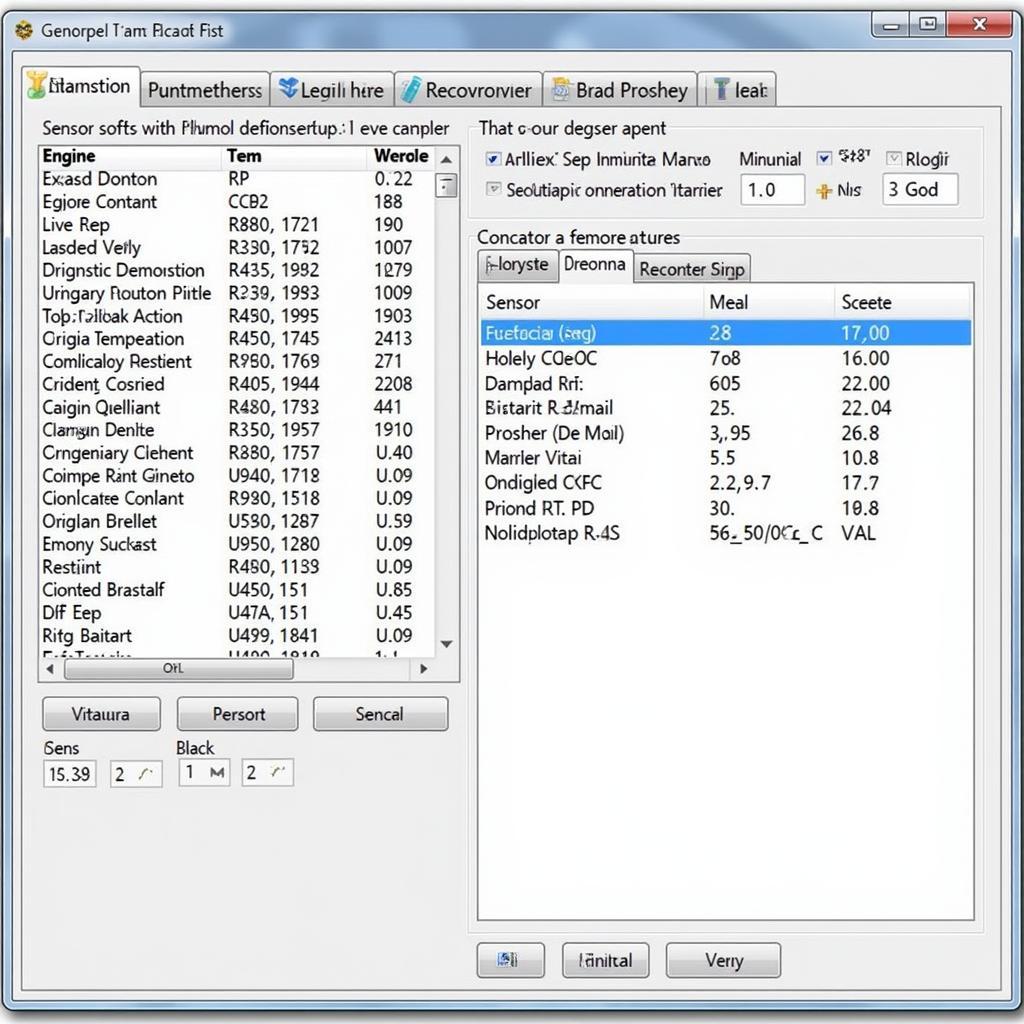Porsche diagnostics is crucial for maintaining the peak performance and longevity of these high-performance vehicles. Whether you’re a Porsche owner, a mechanic, or an automotive enthusiast, understanding the intricacies of Porsche diagnostic tools and techniques is essential. This guide dives into the world of Porsche diagnostics, covering everything from common issues to advanced troubleshooting. You’ll learn about diagnostic software, scanners, and how to interpret those sometimes cryptic diagnostic codes.
Understanding the Importance of Porsche Diagnostic
Regular Porsche diagnostic checks can prevent costly repairs down the line. By catching potential problems early, you can address them before they escalate into major issues. These checks involve using specialized software and hardware to scan the vehicle’s various systems, identifying any faults or malfunctions. This is far more effective than traditional methods, allowing for a precise and efficient diagnosis. See our guide on the diagnostic world porsche.
Common Porsche Diagnostic Issues
Several issues commonly trigger the “check engine” light or other warning indicators in Porsches. These range from relatively simple problems like faulty oxygen sensors to more complex issues such as problems with the engine management system. Understanding these common issues can help you narrow down the problem and seek appropriate solutions.
- Engine Misfires: Often caused by worn spark plugs, faulty ignition coils, or fuel injector problems.
- Oxygen Sensor Issues: A failing oxygen sensor can negatively impact fuel efficiency and engine performance.
- Catalytic Converter Problems: A malfunctioning catalytic converter can restrict exhaust flow and trigger warning lights.
- Mass Airflow Sensor (MAF) Malfunctions: A faulty MAF sensor can lead to incorrect air/fuel mixtures, affecting engine performance.
Utilizing Porsche Diagnostic Software
Porsche diagnostic software allows technicians to access a wealth of information about the vehicle’s systems. This software can read and clear diagnostic trouble codes (DTCs), monitor live data streams from various sensors, and perform advanced diagnostic tests. Accessing the latest porsche diagnostic software is crucial for accurate and efficient troubleshooting.
Choosing the Right Porsche Diagnostic Scanner
Selecting the correct Porsche diagnostic scanner is essential for effective troubleshooting. Different scanners offer varying levels of functionality, from basic code readers to professional-grade tools that can perform advanced diagnostics and programming. Consider factors such as the specific Porsche model, the level of detail required, and your budget when choosing a scanner. Looking for a reliable option? Check out the konwei best porsche diagnostic tool.
Decoding Porsche Diagnostic Codes
Porsche diagnostic codes, also known as DTCs, are alphanumeric codes that represent specific faults detected by the vehicle’s onboard diagnostic system. Understanding these codes is essential for diagnosing and repairing problems. A comprehensive porsche diagnostic scanner will often provide definitions for these codes. For a deeper understanding of these codes, explore our porsche diagnostic codes resource.
What do Porsche Diagnostic Codes Mean?
Porsche diagnostic codes provide valuable clues about the nature and location of a fault within the vehicle’s systems. Each code corresponds to a specific problem, allowing technicians to pinpoint the source of the issue and implement the appropriate repair.
- P Codes: Refer to powertrain-related issues.
- B Codes: Relate to body systems, such as airbags, power windows, and central locking.
- C Codes: Indicate problems with the chassis systems, including ABS, steering, and suspension.
- U Codes: Refer to network communication issues between the various control modules.
Conclusion
Porsche diagnostic is a critical aspect of maintaining these sophisticated vehicles. By utilizing the correct tools, software, and understanding the meaning of diagnostic codes, you can ensure optimal performance and longevity. Regular diagnostic checks and prompt attention to warning signs are key to preventing costly repairs and keeping your Porsche running smoothly.
FAQ
- How often should I perform a Porsche diagnostic check? It’s generally recommended to perform a diagnostic check at least once a year or whenever a warning light illuminates.
- Can I perform Porsche diagnostics myself? Yes, with the right tools and knowledge, you can perform basic diagnostics. However, more complex issues may require professional assistance.
- What is the OBD-II port? The OBD-II port is a standardized connector used to access the vehicle’s diagnostic system.
- Are all Porsche diagnostic scanners the same? No, scanners vary in functionality and price. Choose one that meets your needs.
- Where can I find reliable information on Porsche diagnostic codes? Resources like CARDIAGTECH provide detailed information on Porsche diagnostic codes.
- What should I do if my Porsche’s check engine light comes on? Perform a diagnostic scan to identify the problem and seek appropriate repairs.
- How can I prevent common Porsche diagnostic issues? Regular maintenance and timely repairs can help prevent many common diagnostic issues.
If you need further assistance, please contact us via Whatsapp: +1 (641) 206-8880, Email: CARDIAGTECH[email protected] or visit us at 276 Reock St, City of Orange, NJ 07050, United States. We have a 24/7 customer support team. You can also find more helpful articles on our website like “Latest Porsche Diagnostic Software” and “Konwei Best Porsche Diagnostic Tool”.

